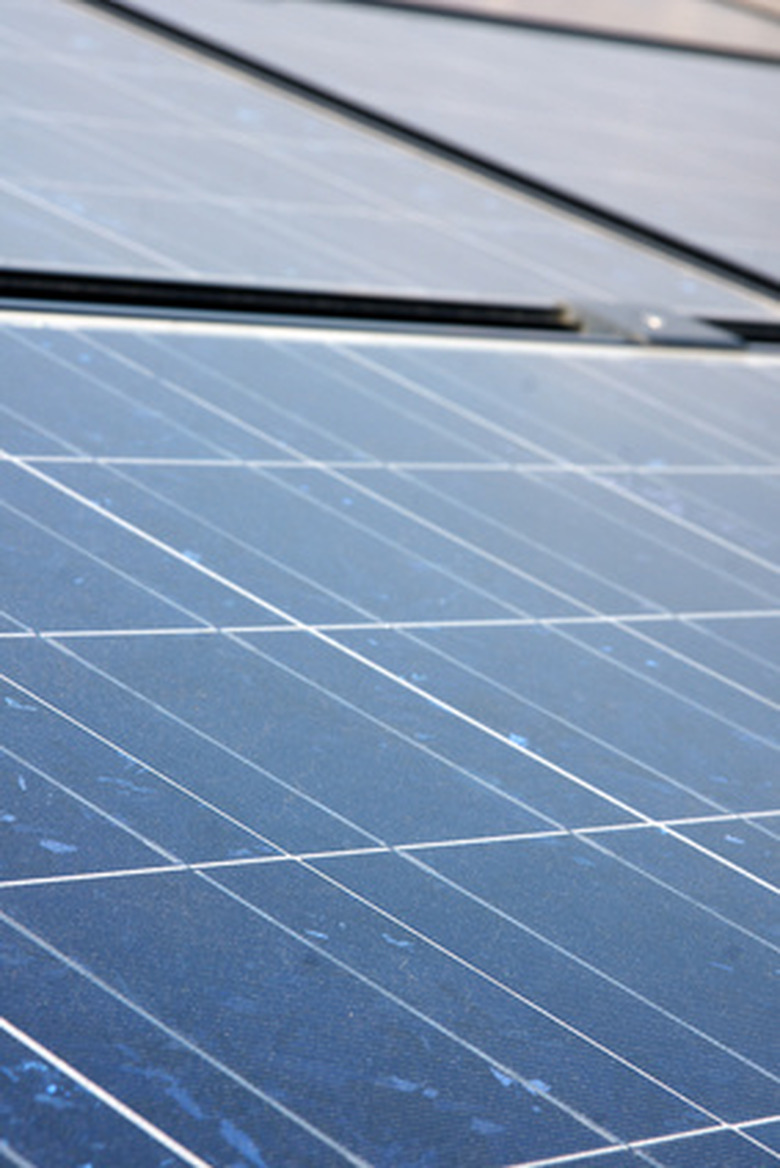How Do Solar Panels Produce Electricity?
Solar panels use photovoltaic cells to produce electricity, according to the United States Department of Energy. Unlike fossil fuels, solar energy is an infinitely renewable energy source. Eventually fossil fuels, a non-renewable energy source, will be depleted and the world will have to turn toward renewable energy sources like solar and wind power. As new solar technologies develop, the costs of solar panels are decreasing while their efficiency is increasing. Solar panels are able to directly convert sunlight into electrical energy.
Function
Function
When photons from the sun strike a photovoltaic cell, electrons are released from the photovoltaic cell, according to the United States Department of Energy. These electrons travel toward the surface of the photovoltaic cell which creates an imbalance in charge between the cell's back and front surfaces. This creates a potential voltage that's similar to opposite ends of a battery. If these two surfaces are connected via an external load like an appliance, electricity is created.
Size
Size
Single voltaic cells can range in size from 0.5 to 4 inches in diameter, according to the United States Department of Energy.
Disadvantages
Disadvantages
One disadvantage of using solar panels to produce electricity is that the amount of sunlight that reaches earth's surface is not consistent, according to the United States Department of Energy. The amount of energy that's delivered to earth's surface from the sun depends on time of year, time of day and weather conditions. Solar energy is difficult to store, which presents another challenge. Another disadvantage is that large areas of solar panels must be built to collect any significant amount of energy.
Advantages
Advantages
One advantage of using solar panels to produce electricity is that bulky mechanical generators are not needed to produce electricity, according to the United States Department of Energy. When using fossil fuels, large generators are needed. Solar panel systems are also easy to install quickly and can vary in size. The major benefit of using solar panels to produce electricity is that energy is produced without releasing carbon emissions.
History
History
The first photovoltaic systems were developed in 1954 by Bell Telephone researchers, according to the United States Department of Energy. Starting in the late 1950s photovoltaic cells were used to power NASA space satellites. Soon after, photovoltaic cells were used to power small items like watches and calculators.
Fun Fact
Fun Fact
The amount of solar energy that falls on earth in one hour is greater than the amount of energy that humans consume in an entire year, according to Pnas.org.
Cite This Article
MLA
Girard, Laurence. "How Do Solar Panels Produce Electricity?" sciencing.com, https://www.sciencing.com/do-solar-panels-produce-electricity-6626967/. 24 April 2017.
APA
Girard, Laurence. (2017, April 24). How Do Solar Panels Produce Electricity?. sciencing.com. Retrieved from https://www.sciencing.com/do-solar-panels-produce-electricity-6626967/
Chicago
Girard, Laurence. How Do Solar Panels Produce Electricity? last modified March 24, 2022. https://www.sciencing.com/do-solar-panels-produce-electricity-6626967/
